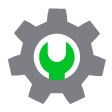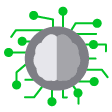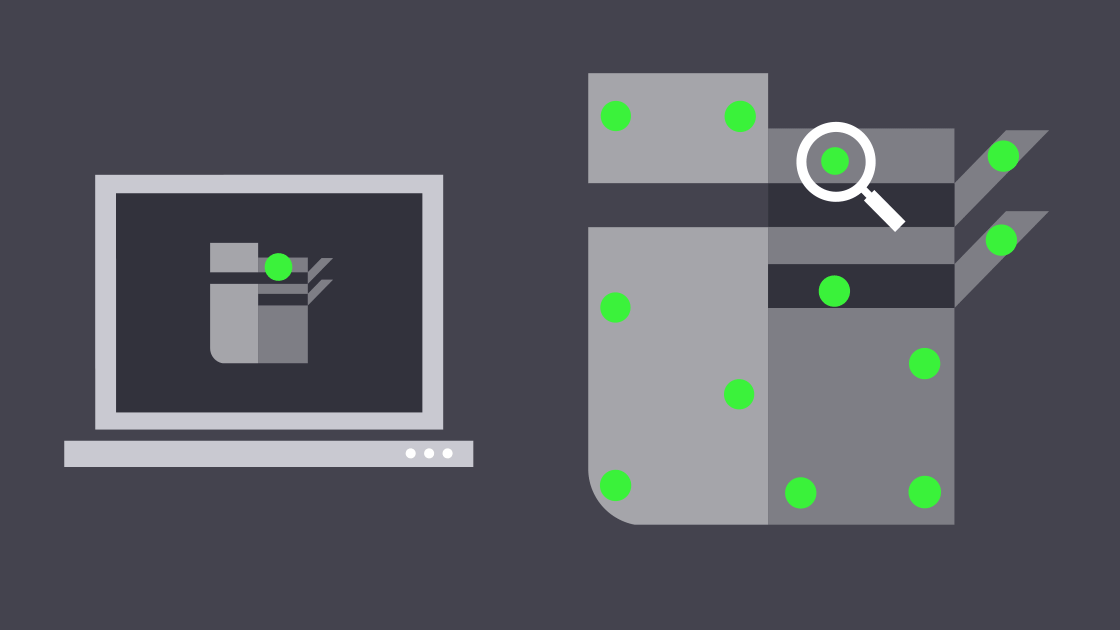
Data + Experience + Testing =
Intentional Engineering
Terabytes of real-world performance data, unparalleled industry expertise and relentless testing give Lexmark the product and customer insights that drive research and development, ultimately extending your investment.

Our testing is torture. So owning a Lexmark won't be.
Lexmark Torture Tests
Every printer’s nightmare is the complex of product testing labs where Lexmark continuously pushes devices to their limits 24 x 7—before, during, and after launch.
Torturing our devices in ways that simulate extreme operating conditions either proves a machine has what it takes to succeed in the harshest real-world conditions or reveals things we still need to work on. So everything from endurance to output quality, and packaging to scan performance, gets put to the test.
And we never stop using the data we gather under torturous conditions to make products designed for reliability, durability, and uptime, whatever and wherever you need to print.

Extreme environments
Test device performance in a variety of environmental conditions starting with normal office conditions and going far beyond design specs by simulating extreme temperatures, wide-ranging air moisture levels, and high and low altitudes.
Test device performance with various run rates, job sizes, number of sides, paper sizes and types, input trays and toner coverage levels. Cross-test with other factors and measures as part of a highly accelerated life test.
Print with and without delays between jobs. Print so much—including repeated insertion and removal of supplies and cartridges—that it simulates rapid device ageing. Then put device and supplies in long-term storage and see how they work when called back to duty.
Test device that’s gone through simulated shipping (including high altitudes and vibration during shipping) and storage.
Test feed performance with over 400 papers from around the world, including office papers, card stock, labels, envelopes, papers with recycled content, previously printed sheets, curled media from extreme environments, and unsupported media types.
Check output visually and perform calibrated evaluations of color fidelity, color alignment and image skew, across a wide variety of languages and image types.
Evaluate how well toner stays bonded to paper when applied in various extreme operating conditions.
Simulate customer environments with automated tray slamming and kicking, device dropping (with and without packaging), pushing device across a work surface, and bright environmental light exposure.
Challenge scanner with stacks of folded, hole-punched and specialty papers, with slick, rough and normal surfaces, plus annoying add-ons like sticky notes and adhesive tape. Confirm printer glass can take up to 55 lbs. of weight.
Across other punishing tests, evaluate wear and failures of fuser, feed/separator rollers, cartridge contacts, transfer roll, paper path, electronics and laser assembly. Validate device usability and electrical/electromagnetic performance.
More than a million Lexmark devices tell us exactly what they're going through. And we’re listening.
Toiling away in every imaginable industry in every corner of the globe, the intelligent, sensor-equipped Lexmark devices that customers ask us to manage are continuously generating the data we need to make our products stronger, better and more reliable.

This powerful application of big data analytics expedites problem resolution, reduces unnecessary service calls, and maximizes uptime. For R&D, it also drives deeper understanding of product operation and improves future product design.
From raw data to deep understanding
Sensors and algorithms: What we Learn
Job sizes
Though many Lexmark product tests were built on the assumption that customers’ average job size was three pages, sensor data indicated that managed print services users were actually running more one-page jobs. Based on this data—and the technical implications of single-page output on device performance and wear—we can better understand how Lexmark devices get used, and design and test products to meet real customer needs.
Device usage patterns
Without data, manufacturers can only estimate how frequently customers actually print. With managed print services data, we can now see a distribution of how many pages per time period customers actually use their printers, and determine averages. This assists in developing appropriate testing protocols and ultimately designing devices to fit real-world scenarios.
Sensor sensibility
One customer’s device reported a high number of paper-jam errors, leading the field service team to investigate. They discovered it wasn’t really paper jams, just an empty paper tray. The “paper out” message wasn’t showing up due to a bent sensor, driving a change in product testing to include running trays empty and confirming that the proper “load tray” message appears.
Grasping the gap
The product development process includes monitoring the gap between pages, an indicator of wear and other inherent variability in the paper path. Being able to monitor whether the gap between the pages is narrowing or widening over time allows Lexmark engineers to control paper-feed motor speed via software in order to maintain a consistent throughput rate for the device, for predictable performance throughout its lifetime.
Toner mystery, solved
When some users reported running out of toner without warning, it initially appeared that toner cartridge sensors were failing to detect low toner levels. However, other system sensor data allowed Lexmark engineers to trace the cause of unexpected run-out back to failing system cards or defective cables, thus clearing the suspect toner cartridges of any actual problems.
Torque tech
Sensor data reflecting fuser motor torque can provide early clues about fuser wear and the likelihood of upcoming failure, prompting support personnel to perform preemptive component replacement. Combining such torque data with a known increase in paper jam errors can even point to defective imaging units, again allowing replacement before complete failure occurs.
It's not magic. It’s based on Lexmark's expertise and experience with artificial intelligence, machine learning and big data analytics.
The key is our ability to capture and interpret millions of data points collected from sensors on Lexmark-managed devices around the world. Taking action to keep our customers’ fleets at peak performance is a big advantage of Lexmark Analytics, but it’s not the only one. Ultimately, the point of listening to our devices out there—and making sense of the data they collect—is to gain insights that drive product improvement in here, helping us make products that work better and last longer . . . extending your investment.
That’s intentional engineering, only from Lexmark.
It’s not just hardware. To Lexmark, it’s a platform for understanding the challenges customers face, whatever their industry.
Whether you make satellites or sell shoes, print is still an integral part of many business processes, and we know your needs are unique. That's why combining our industry expertise with personal understanding is so powerful as we work to turn raw data into well-informed insight.
Led by specialists who are veterans of nearly every industry, Lexmark applies its experience to understand device performance in the context of where it's deployed, how it's used and the business process it supports. And with over 6.5 million Lexmark devices around the world running in places like banking, government, healthcare, insurance, education, manufacturing, and retail, we’ve learned a few things about the operating conditions, workflows, and specialized needs of your industry.

The key is exceptional customer engagement, the kind you can only get from talking to real people … or more accurately, listening! And nobody listens like Lexmark.
Lexmark Listens
Stronger trays for better work days
When one organization using Lexmark products across thousands of locations reported their devices’ paper trays were breaking, our industry consultants investigated. They discovered that employees in a retail setting were kicking and slamming paper trays shut, sometimes resulting in breaks to the trays’ backstop mechanism. Within two weeks, Lexmark engineers came up with a temporary fix to reinforce the backstop on already-deployed models, developed an upgrade for that model’s paper trays, and made automated tray-kick testing a standard part of future product development.
Better access design for safer real-world performance
A national retailer with almost 10,000 locations tested pre-production Lexmark printers and appreciated a new front-door design that enables easy access for cartridge replacement, imaging unit service, or paper path misfeeds. However, they pointed out that their devices would be placed below retail counters and the access door might present a tripping hazard in that location, or simply break when someone ran into one while open. Within five days, Lexmark engineers increased the model’s door-opening angle and gave the hinge a break-away feature that allows for easy reattachment in the unlikely event it gets knocked off. The modifications were fully implemented by the time the printer went into production.
Bright ideas for consistent print quality
“Why does our printed output sometimes have black bands across the page?” one user of Lexmark products asked their industry consultant. After doing a thorough site investigation, a Lexmark product engineer discovered the issue was related to the device’s placement near a large window where direct sunlight streamed in at certain times every day. Bright light was entering the device through a vent at an angle that allowed the photo-sensitive imaging drum to be exposed only at certain times, causing the sporadic banding. Lexmark engineers provided light-stop blocking behind the vents to solve the problem for affected machines and have since made bright-light testing a standard part of all product development.
By combining our real-world big data analytics with decades of first-hand experience in nearly every industry, Lexmark creates products and services that directly address your processes, use cases, trends, challenges and opportunities.
You’ve got enough responsibilities. Lexmark systematically works to make printing one less thing to worry about.
Print continues to be an important communication vehicle and an essential service IT must provide. As one of the few shared devices in the IT environment, each output device presents security, accountability and usability concerns that IT administrators must address. More than anything, you just have to keep print going, even in harsh environments where dust and dirt, poorly controlled climate and untrained users can result in frequent failures and the disruption of business processes.
The never-ending pursuit of product improvement

Lexmark intentionally engineers printers and MFPs to work flawlessly in both routine office settings and the most challenging environments.

We apply sophisticated algorithms to big data collected from over one million devices in our global managed print system.

Our industry consulting teams provide context to the collected data along with a deep understanding of customer business processes and challenges, a rare level of industry engagement.

That insight feeds Research and Development, enabling rapid development of products that last longer, work better, and minimize environmental impact—all extending your overall investment.

Intentional engineering, foundation for legendary Lexmark uptime and endurance.
Many organizations plan to replace print devices every 3-5 years, so manufacturers often build products to this intended lifespan. Lexmark knows that such devices frequently stay in their working environment past this planned time period.
Lexmark’s intentional engineering has raised the bar by delivering technology that operates productively and efficiently for much longer than you might expect. And being able to leave devices installed longer than anticipated drives down your total cost of ownership (TCO).
Learn how intentional engineering can extend your investment.




